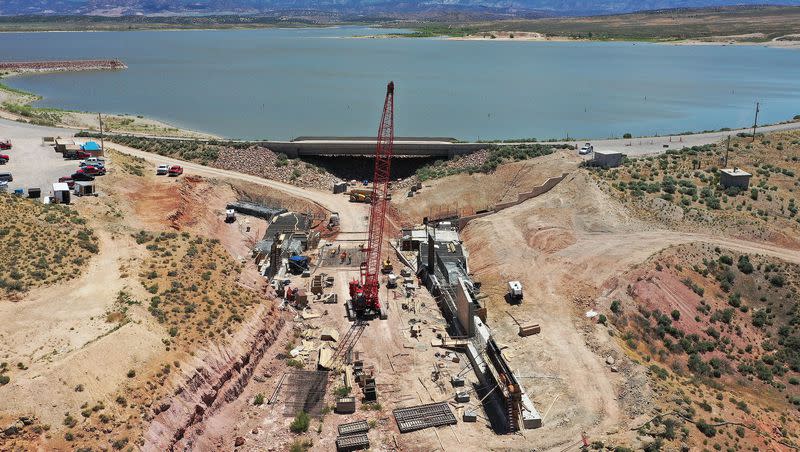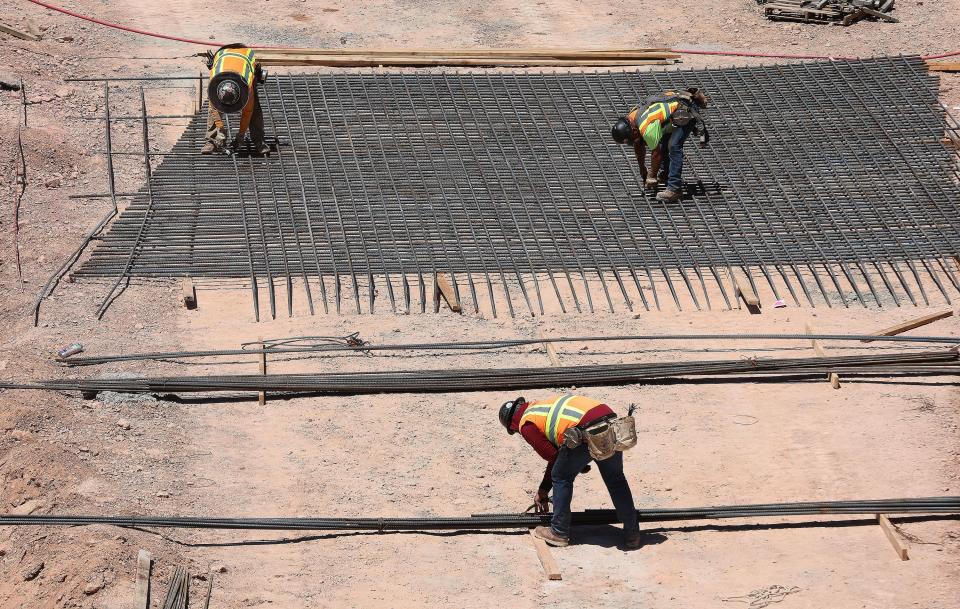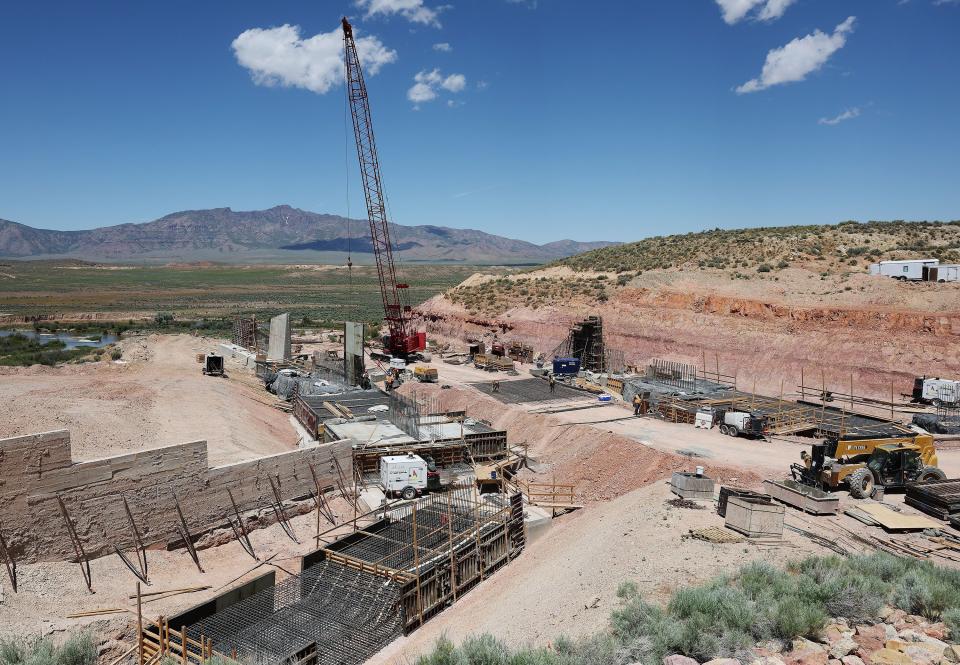Utah’s ongoing efforts to boost dam safety, and why you should care

Dams are the lifeblood of the West. Without them, the region wouldn’t be able to support metropolitan areas like Salt Lake City, Las Vegas, or southern California with critical drinking water and the ability to grow crops. Water is needed in the “bank” for use in times of drought.
But the West’s dams are aging.
Imagine being “born” in 1906, enlarged in 1916 and undergoing a portion of an upgrade in 2004? That’s a lot of years to fulfill your mission — especially if it is 2023 and there are decades of “life” still to come.
Over time, things start to get stressed.
The knees buckle, the back starts hurting. Arthritis kicks in. And in the case of dams, it is outdated infrastructure threatening the water supply — which threatens the future of farmers, ranchers and the public safety of people who live downstream from these structures.
Related
With this record snowpack, the dams are spilling. That is a good thing — and what they were designed to do. But officials say now is the time to take a health check on the ones that need some rehabilitation.
“With aging infrastructure here in Utah, water is so critical, more than just to irrigators but for its recreational benefits and other reasons. The state has recognized the need to rehabilitate these projects and keep that infrastructure in service to protect them as the commodities they are,” said Everett Taylor, assistant Utah state engineer over dam safety and stream alteration.
On average, Taylor said the state inspects about 300 dams a year, including those deemed high hazard. There are 223 with that classification in Utah.
The Division of Water Rights identified 150 of those high hazard dams as not meeting the state’s minimum safety standards.
● Of those, 45 have completed requested upgrades, 24 are currently in some phase of design or construction, and 81 are waiting for resources to begin design and construction.
● Sevier Bridge Dam, the one built in 1906, and DMAD in Millard County, are two examples of high hazard dams under active construction.
“Hazard is a description of the consequences of the failure of the dam, not a description of its condition. In Utah, it would mean if a dam failed, it would likely result in the loss of human life. Those dams get inspected on an annual basis,” Taylor said.
When development encroaches on a “moderate” hazard dam, it is elevated to high hazard, a number which is growing due to Utah’s booming population.
State Engineer Teresa Wilhelmsen, in a recent briefing before lawmakers on the Natural Resources, Agriculture and Environmental Quality Appropriations Subcommittee, warned of the increasing problem associated with dams because of where homes and other development is happening.
Related
“When you are a state engineer and you’re looking for a house, the top two things on your criteria are if you are below a dam or a canal. You don’t buy there, but people do live where they want to live,” she said. “Development downstream does have an impact. I know we have a dam in Utah County where folks have basically started digging into the embankment because they wanted to increase their garden area.”

Updates, designs and more updates
The division, necessarily, is constantly in update and inspection mode, and with 6,500 dams in Utah that are state or privately owned, it is a daunting challenge.
A recent project is the Sevier Bridge Dam that impounds Yuba Lake, a reservoir that at full capacity holds 225,000 acre-feet of water. The dam is owned by the Consolidated Sevier Bridge Reservoir Company. The dam was first constructed in 1906, enlarged in 1916 and had some upgrades performed in 2004. It is now undergoing an overhaul that includes seismic upgrades.
“It’s very critical,” said owner Andy Nickle. “This is our main storage reservoir. ... If you don’t have water, you don’t grow anything. So, you know, a dam of this size — it’s the largest privately owned reservoir in the state of Utah. It is important for us to make sure that it’s in good shape and stable so we have a long, long future ahead of us of being able to water our crops.”
Nickle said the water from Yuba in Juab County irrigates more than 70,000 acres of farmland and also provides water for the Intermountain Power Plant in Delta.
He emphasized the construction of the upgrade has been especially critical given the timing of the historic drought that has impacted the state.
“We were able to capture and maintain responsibly the use of all the water that made it into the reservoir. I think coming off one of the biggest droughts that we’ve ever seen, to be able to do that and still continue with our project — I think it shows that we’re trying to conserve water. We don’t want to see it wasted.”
The 1963 failure of the 75-feet tall Little Deer Creek Dam that resulted in one death is what caused the state of Utah to realize dam safety is a critical issue, and in 1989, with the failure of the Quail Creek Dam, the foundation was laid for the state Division of Water Rights to solidify its authority over a dam safety program, Wilhelmsen said.
The division has oversight of state-owned and private facilities and dams, but those such as Jordanelle and Deer Creek fall under federal purview.

A daunting problem
“This is a problem throughout the country,” Taylor said. “It is aging infrastructure and the challenge is trying to get ahead of that and protect that initial investment. ... It is like a car; you do maintenance, but at some point it has reached its design life. Dams that still have a purpose or function, we will fill the role of the rehabilitation of those dams.”
According to the Federal Emergency Management Association, there are approximately 15,600 dams in the United States classified as high hazard. And of those, 11,300 have a “significant potential” classification that means not only probable loss of human life but economic consequences, environmental damage and disruption of lifeline facilities. Overall, there are 90,000 dams in the United States.
Candice Hasenyager, director of the Utah Division of Water Resources, said the state Legislature has appropriated on an annual basis since 2008 ongoing money of $3.8 million for dam safety.
One time money has fluctuated, but for 2024, that appropriation was $24 million. It helps, she added, but the list of what needs to be done is long. Via the Board of Water Resources, 90% of a project’s cost can be met for privately owned dams, with the owner paying the rest. For government-owned facilities, the state commitment is 80%.
The average cost to upgrade one dam is $4.5 million.
She told lawmakers at the subcommittee meeting the cost to upgrade the remaining dams in the state is $454.5 million.
At the rate of annual ongoing money, she pointed out, those projects would take about 120 years to complete — not counting what other new high hazard dams may come online in the future.
Sen. Scott Sandall, R-Tremonton, acknowledged the problem at the outset of the presentation.
“I’ll take the prerogative as chair and just preface this: We realize dams are our lifeblood, as far as being able to allocate a scarce resource and survive the times when we have less. I do know our dam safety program is a ways behind and maybe that is an understatement.”

